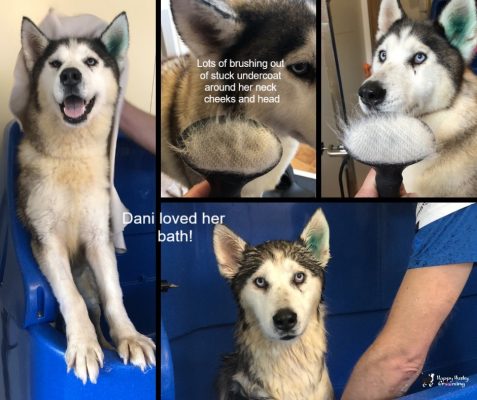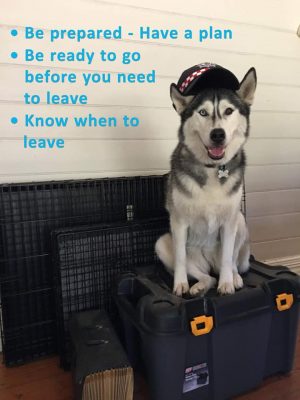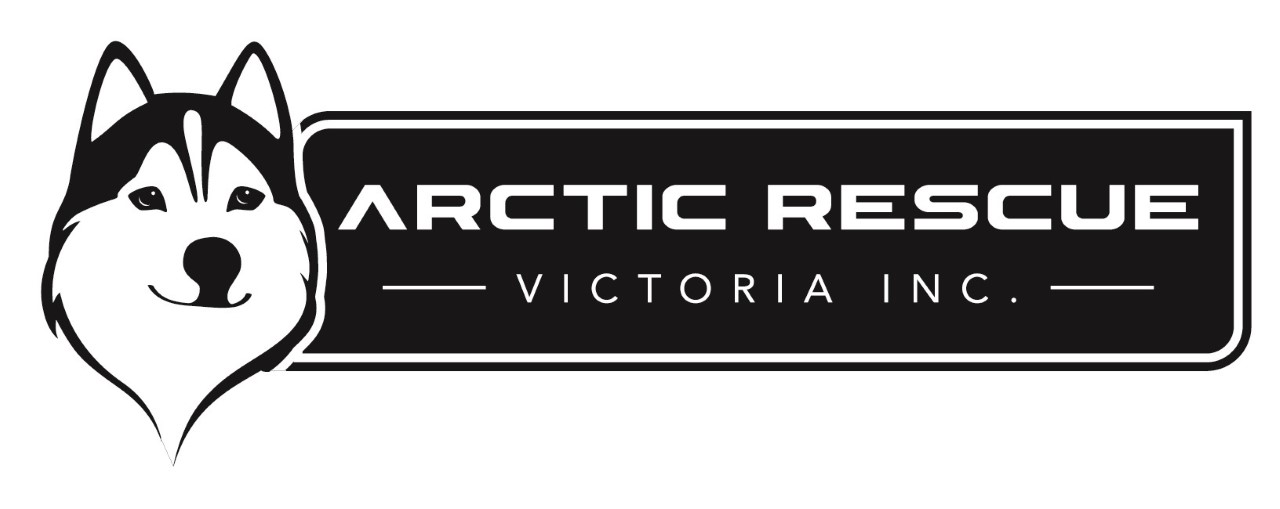Health & wellbeing
Wondering how to keep your dog happy and healthy?
We are here to help!
The amount of information and opinions online can be quite overwhelming. We have assembled numerous free resources for anyone wanting to learn about how to best care for their Arctic breed dog(s) based on our expertise and years of experience in caring and owning Malamutes, Huskies, Akitas and other fluff butts. We also pride ourselves on staying current with the relevant information. We, therefore, update all the information given to our supporters and carers on a regular basis.
Grooming
 Knowing the correct way to groom your arctic breed dog is essential to keep their coat clean, odour-free and in good condition, and to protect them from heat, cold and wet weather. Download the grooming.pdf document to learn the best types of brushes and combs for your dog’s fur and some tips on nail clipping.
Knowing the correct way to groom your arctic breed dog is essential to keep their coat clean, odour-free and in good condition, and to protect them from heat, cold and wet weather. Download the grooming.pdf document to learn the best types of brushes and combs for your dog’s fur and some tips on nail clipping.
Weight Management

Is your dog the right weight?
Can you clearly feel your dog’s ribs? Does your dog have a nice tuck in behind the ribcage?
If not, you need to read this article for the sake of your dog’s health!
Although this article is written about the Alaskan Malamute, the information and advice are relevant to all the arctic breeds
Liver Shunt

Rosie – Samoyed pup with liver shunt
A liver shunt in dogs is a congenital condition (present from birth) in which veins that should carry blood to the liver bypass the liver through an abnormal vessel. This allows blood to enter the body without undergoing the liver’s filtration process to remove toxins, medications, and wastes from the blood. It also prevents the absorption of critical nutrients that would normally occur in the liver.
The most common sign that a dog has a liver shunt is stunted growth. Runts of the litter are often diagnosed with liver shunts since this problem causes issues with nutrient assimilation from food. These small puppies may also be quieter or more reserved than their counterparts due to the issues with energy regulation.
Surgery is often the treatment of choice for most dogs with a portosystemic liver shunt. As a result of surgery, the abnormal vessel is attenuated so that blood can be redirected to the liver and blood flow is restored.
Dogs that have surgery generally have a good prognosis but those that do not may eventually die from the liver shunt.
Click here for more information about liver shunt in dogs: Liver Shunt in Dogs
Activities
 Activities and sports for Arctic dog breeds
Activities and sports for Arctic dog breeds
The Husky and Malamute have a natural instinct to pull and work, so enjoying activities such as sledding, backpacking and weight pulling with your arctic breed dog will help keep them fit and happy. Explore all the activities that you can get involved with to keep your dog happy and healthy here.
Emergencies
 Do you have an emergency plan for your pet?
Do you have an emergency plan for your pet?
Whether you live in a bushfire prone area, suburbs or the city, you should have a plan for your pet in case of emergency. Don’t know where to start? Our wonderful volunteer Mel put together the below post to help you get yours together!
You don’t have to live in the country to be at risk of fire. If you live near areas that have a significant bush, forest, long grass, or coastal scrub, then you need to plan ahead for the fire season.
Not everyone thinks clearly in an emergency. Taking steps to get prepared before the fire season means you know what to do when you’re at risk of fire. A written, and preferably well-practised plan, will help you remember what needs to be done during a crisis. Use the Bushfire survival planning template – Leaving early (PDF) to help you write down your plan.
Leaving early is the safest option to protect yourself and your family. Leaving early means leaving the area before there are any signs of a fire – not when you can see flames or smell smoke. Leaving early means avoiding panic, being trapped, making the wrong choices and risking serious injury or death.
The information and templates in the Fire Ready Kit and on CFA website in the links below will help you make your plan for safety.
The Extreme fire danger rating is the trigger for our plan, so we will be packed up and ready to go with everything in the car before 10 am, just as our plan says.
On workdays our dogs will come with us to work, we aren’t taking any chances. When we can be home, we will stay at home, with the car fully packed, and at the first sign of bushfires, emergency warnings or road closures in the area we will leave.
On a code red day, we will have left the night before.
By being prepared in advance we have the time to pack everything we will need for ourselves, and for our pets.
Emergencies are a stressful time for everyone, so think about what might help you and your pet to cope a little better remembering the possibility that you might not be able to return to your home for a few days.

Our doggie bushfire kit contains:
- CRATES or means to secure – a must have to ensure you dog is safe, secure and as comfortable as possible during an evacuation scenario. It doesn’t matter where I end up, I’ll be able to keep my dog safe and they will be more comfortable in the known environment of the crate. If you dont have a crate or haven’t crate trained your dogs – there is no better time to start than the present. If you dont own a crate you will need to ensure you have some other means to secure your dog.
- ESSENTIAL MEDICATIONS for your dogs. And if you have space, take things you might need in an emergency scenario such as antiseptic sprays and ointments, fly repella or sun cream.
- Treats – if you have time, pack some treats. Your dog is likely to be confined or tethered for hours on end during an evacuation, long lasting chews can help to keep your pet occupied.
- Muzzles – take a muzzle in case your dog is injured and in pain, or needs to be prevented from eating unsafe items. You never know where you’ll end up and a muzzle can be an excellent peace of mind. This might also allow you to safely rescue an unknown dog in an emergency.
- Records – pack a copy of your dogs records including microchip number, council registration and vaccinations. This is a great time to ensure your dogs microchips contact details are up to date, as well as current council registration (every April in VIC) and current C5 vaccination within the last 12 months. Ideally scan all these and email them to yourself so you have a digital record always available.
- FOOD – pack minimum 3 days worth of dry food per pet
- Toys – toys will help to keep your pet from going stir crazy when cooped up all day. A variety of food dispensing toys and interactive play toys will help give them something to do.
- WOOLLEN BLANKET – a woollen blanket in case you get caught in fire or thick smoke, this can also double as bedding.
- BOWLS – for food and water. Consider silicon bowls which can be compressed for space saving and which wont get as hot as steel. The blue bowl in this photo is silicon.
- SPARE LEASH AND COLLAR – pack a spare leash and collar for each pet in case their normal one gets lost or damaged during an emergency. Now is also a great time to check that your dog is wearing ID that is up to date and can be clearly read as well as having their council tag. Consider a personalised collar with clearly visible contact number, remember your pet is likely to feel stressed during an emergency, an easily visible phone number may just save your dog’s life.
- BAG OR BACKPACK – if you are packing a large container like I do, dont forget to pack and emergency bag into which you put just the essentials (items in all caps or with boxes around the numbers). In an emergency you may have to leave your vehicle and travel on foot and you might not be able to bring everything with you. Pack the essentials into a lightweight, comfortable and easy to carry bag. This bag from hound dog has a dedicated poop bag dispenser and the strap is removable with a clasp so that it can be used as an emergency leash.
- WATER – pack enough water for each pet and person for a minimum of 3 days, have multiple bottles.
- FIRST AID KIT – Pack a first aid kit suitable for dogs and humans
- Towels – towels can be used as bedding and also as a visual barrier or crate cover during emergency accomodation.
- Car restraint – during a stressful emergency your dog may act differently to normal, to reduce the risk of an in transit accident use a seatbelts or harness restraint if your dog is traveling inside the car cabin with you.
- Treat pouch with poop bags – take your walking pouch loaded with treats and poop bags. You’ll need to clean up after your dog and this way you can also take them out for some walks and training to help them get daily physical and mental exercise.
And finally, think of those around you. Our kit has an extra set of everything for our neighbours’ dog. They have access to and know how to get out dogs, as do we theirs and they know where our kit is located. We also have extra leashes, collars and car restraints to pick up lost dogs in case we come across any. We know which of our extended neighbours have pets, how many and have their contact details.
For more resources and to make your own fire plan for both humans and pets use the links below.
Stay safe, and if you need anything, please reach out.
Links:
Pets & Bushfires
www.cfa.vic.gov.au/plan-prepare/pets-and-bushfires
Make your Plan – CFA Bushfire survival planning template
www.cfa.vic.gov.au/…/9ba3051e-993b-794c-5ed7-ce9a28…
Other sources
But don’t just take our word for it…
For more information on health, activities and events for arctic breeds and dogs in general:
- Alaskan Malamute Club, Victoria: www.amcv.org.au
- Siberian Husky Club of Victoria: www.siberianhuskyvic.org.au
- Dogs Victoria: www.dogsvictoria.org.au
- Northern Victorian Sled Dog Club: nvsdc.org.au
Shop
Wondering where to get your healthy dog treats, grooming and other equipment? Have a look at our online shop. 100% of proceeds from your purchase directly supports the dogs in our care.
Resources
Curious about some behaviour and training tips?
